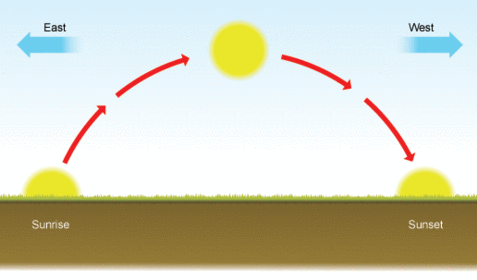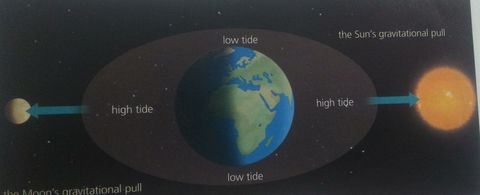Close

The first successful Moon landing in 1969 was an enormous scientific advance for our grandparents' generation. Neil Armstrong's"small step for man" and"giant leap for mankind" was the result of the work of generations of astronomers, s
POSTER
Greek philosophers, such as Aristotle and Plato, were the first to talk about the Earth as a sphere and not flat. However, it was the first explorers who circumnavigated the Earth, such as Magellan and Elcano, who proved that it was round
POSTER
In 1605, Kepler's laws of planetary motion described planets as having elliptical orbits. In 1687, Newton discovered the force of gravity
POSTER
Everyone believed that the Earth was at the centre of the Universe until Copernicus(1473-1543 proposed a Sun-centred system in the 14th century. Galileo(1564-1642) had to defend the same idea in front of the Roman Inquisition.
POSTER
Edwin Hubble(1889-1953) discovered that the Universe was much larger than people thought He provided observational evidence for the Expanding Universe Theory
HOW THE EARTH AND THE MOON, MOVE
Both the Earth Moon's move in anti-clockwise direction, the opposite to that of clock hands It takes the Moon 28 days to orbit the Earth, while Earth needs days to orbit the Sun. Earth spins on its axis while it 365 orbits the Sun. One rotation takes Earth 24 hours, or one day, complete. Its axis is also tilted, like the axis on a globe.
HOW THE EARTH AND THE MOON, MOVE
It is colder in winter because the sun's rays have to travel further to reach the Earth. This is because one of the Earth's poles tilts away from the Sun every six months as it orbits the Sun When the North Pole tilts away from the Sun, it is winter in the Northern Hemisphere.
HOW THE EARTH AND THE MOON, MOVE
On the spring and autumn equinoxes, the Northern and Southern hemispheres receive equal amounts of sunlight. 'Equinox' means equal night' (12 hours)
HOW THE EARTH AND THE MOON, MOVE
There is more daylight and it is warmer in summer than in winter. When it is summer in the Northern Hemisphere, it is winter in the Southern Hemisphere. This is because the North Pole is tilting towards the Sun.

HOW THE EARTH AND THE MOON, MOVE
1 - How long daes in take Earth to spin once on its axis ?
2- In which direction does the planet spin ?
3-- How long does the Earth is orbit of the sun take ?
4-- What is the Equinox ? How many equinoxes are there per year ?
HOW THE EARTH AND THE MOON, MOVE
Tides when we are at the beach sometimes we can see a lot of sand and sometimes very little sand. This is because oceans have tides. Tides are the rise and fall of the seas and oceans. They are caused by the gravitational pull of the Moon, due its proximity, and the Sun, due to its size. This means water is pulled both directions and results in: rises and falls every six hours. two high tides and two low tides every day.

HOW THE EARTH AND THE MOON, MOVE
5-- Find out the names and shapes of the eight lunar phases. Draw and label them in your notebook .
6-- Keep a diary for 2 weeks. Draw the shape of the Moon every night.
What lunar phases can you see ?
Did you know One day on Venus lasts nearly 243 Earth days and its year only lasts 2 days! Jupiter completes one rotation in just 9 hours and 57 minutes. One day on Mars lasts about the same as one day on Earth.
Measuring and representing the Earth
There are different ways of depicting the Earth. For spherical 3D depictions we use a globe. For flat 2D representations we use maps Both these representations are slightly inaccurate as the planet is not flat nor a perfect sphere. We also choose to leave certain information out, depending on the type of map
Measuring and representing the Earth
Physical maps show the main features of a landscape such as deserts, mountains, rivers and lakes
para mí
Measuring and representing the Earth
We use a series of symbols and colours to represent landscape(on physical maps), and cities and boundaries(on political maps) of an area. These are explained in a key.
Measuring and representing the Earth
Political maps show man-made features such as cities, roads and borders
Measuring and representing the Earth
An atlas is a book contains: maps of every country and continent in the world. thematic maps with information about population, climate, and physical and political features.
Measuring and representing the Earth
1--Are globes and maps perfect representations of the Earth? Explain your answer.
(2 What is the difference between the two types of maps?
3 why are atlases useful? What do they contain that other representations of the earth do no ?
Measuring and representing the Earth
4--What type of map do we use to look at cities? What are its main characteristics?
5--What other information can we find out from maps? Use the internet to see how many different things you can find.
HOW WE STUDY THE SOLAR SYSTEM
A stronomers use many tools for studying the Solar System such as telescopes .
Telescopes usually use mirrors and are called reflecting telescopes .
Space telescopes are reflecting telescopes .
They are launched into orbit and allow astronomers to study space without interference from the Earth ´s atmosphere.
USSR
The USSR sent the first animal a dog called Laika , into on the SPUTNIK 2 mission in 1957 .
The USSR was also responsible for sending the first person , Yori Gagarin into space to orbit the Earth in 1961
USA
finally got its victory in July 1969 when Neil Armstrong completed a lunar orbit and Moon landing on the Apollo 11 mission .
INTERNATIONAL
Today we have communication weather satellites international Space Station where nations now share information and resources
falta 2 did you know pag 14 y 15

 Hide known cards
Hide known cards